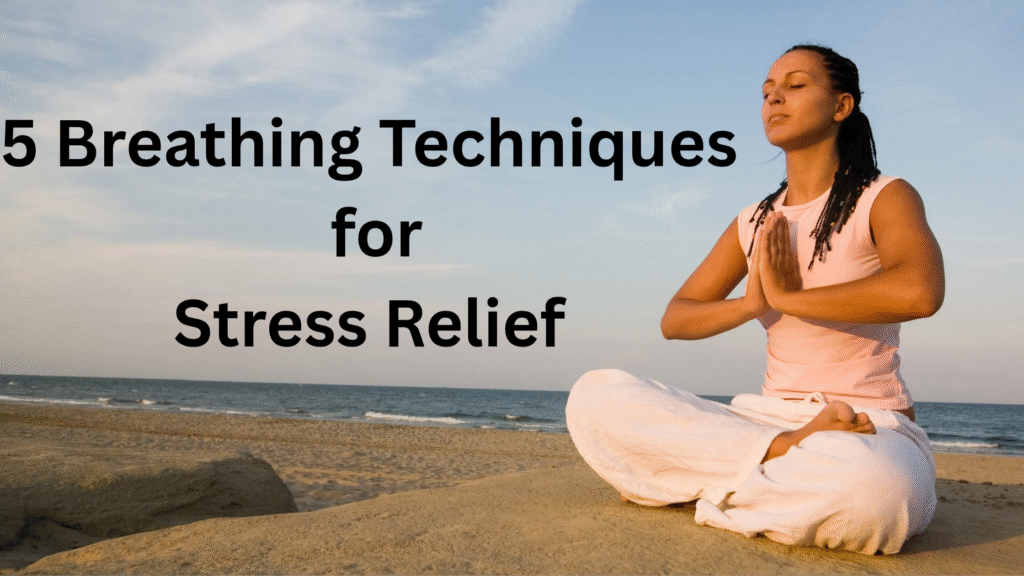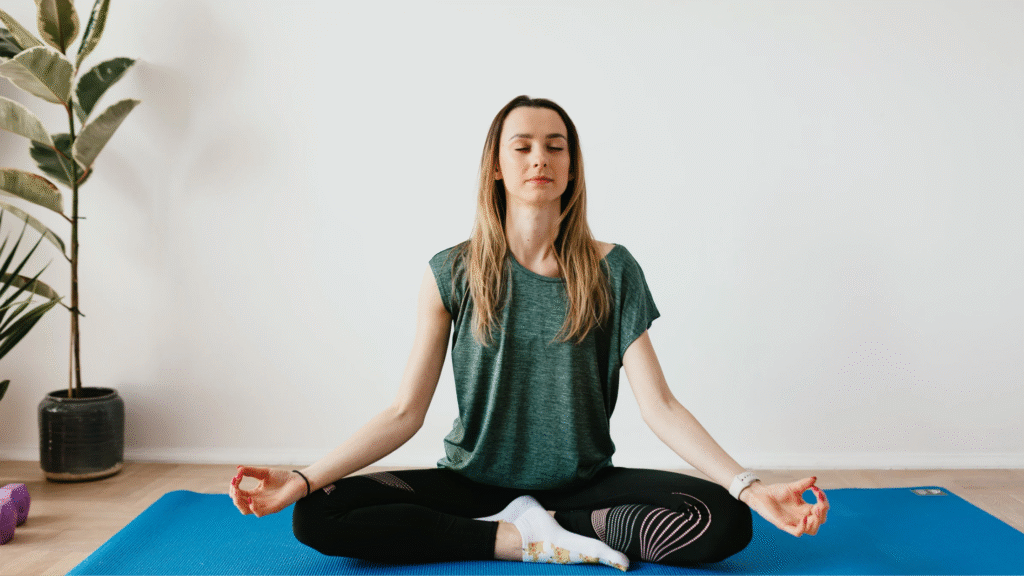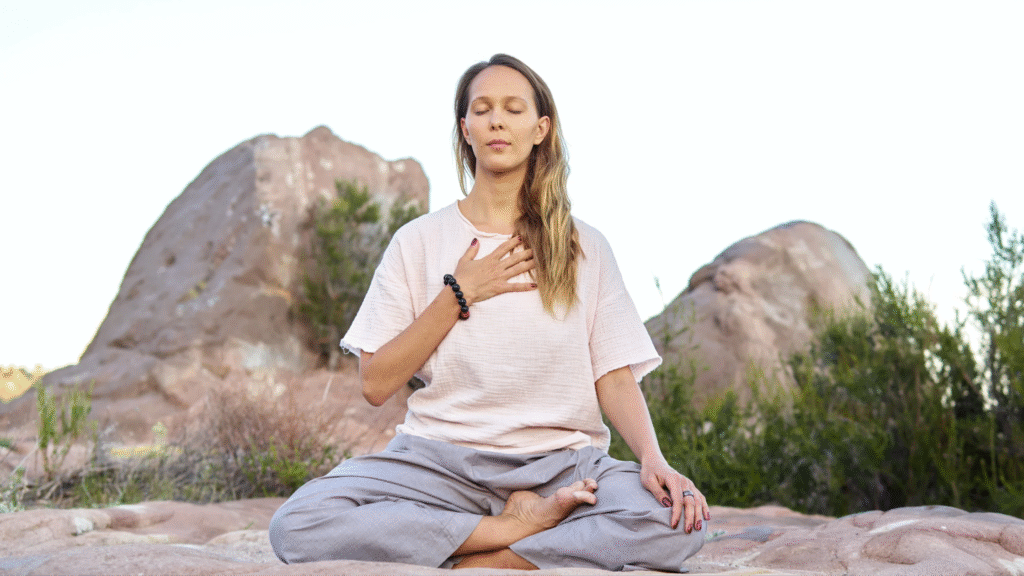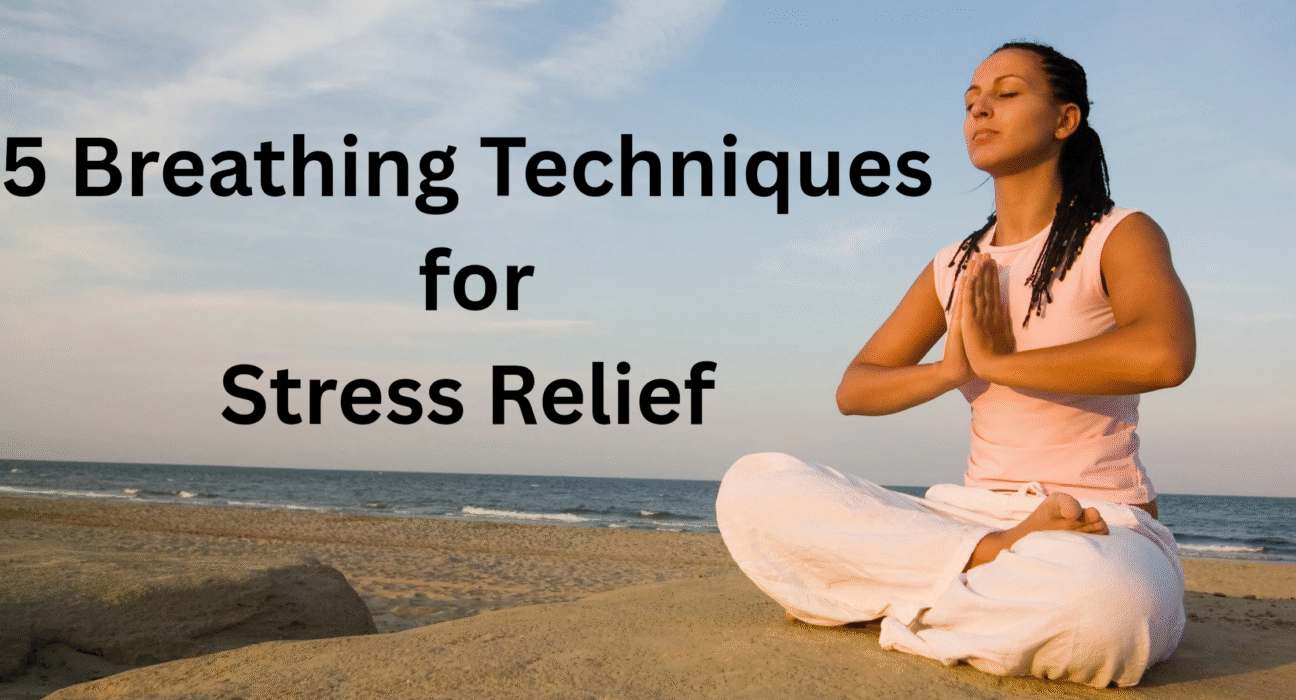Disclaimer: This post contains affiliate links. If you make a purchase through these links, we may earn a small commission at no extra cost to you.

Sometimes our lives become overwhelmed. Maybe because of workload, personal problems, or just daily chaos, anyhow, stress always finds a way to enter into our lives. But you know you already have one of the most helpful tools to get relief from stress, and that’s your breath. Easy and steady breathing can relax your mind, slow down your heart rate, and also give you a moment of relaxation and peace when you need it the most.
Here are 5 useful and powerful breathing techniques that will help you in managing stress naturally. For this there’s no need for any fancy equipment or even a yoga mat—just a few minutes of silence and the commitment to breathe mindfully.
1. Box Breathing (4-4-4-4 Method)

Also called: Square Breathing
Good for: stress, anxiety, overwhelm, and mental concentration
Box breathing is a very simple and easy technique that navy officers and athletes practice to keep themselves calm and alert. The idea here is to breathe in a box pattern—inhale, pause, exhale, pause—all for the same count.
How to do it:
1. Sit in a comfortable position.
2. Inhale from your nose for 5 counts.
3. Hold your breath for 5 counts.
4. Exhale gradually through your mouth for 5 counts.
5. Again, hold your breath for 5 counts.
6. Repeat the cycle for 5 minutes.
Why it works:
This pattern provides a break to your brain, activates the parasympathetic nervous system, and reduces your stress hormones, which is cortisol.
Personal tip:
Try this before an important meeting or before going to bed. As of this, you’ll feel more concentrated and confident in just a few rounds.
2. 4-7-8 Breathing

Also called: Relaxing Breath
Good for: falling asleep, calming panic
This breathing technique was developed by Dr. Andrew Weil. This technique keeps your mind and body quiet, especially when you’re feeling anxious or overthinking.
How to do it:
1. Sit comfortably in bed.
2. Quietly inhale from your nose for 5 seconds.
3. Hold your breath for 10 seconds.
4. Gradually and audibly exhale through your mouth for 10 seconds.
5. Repeat this at least 5 times in the beginning and increase the times as you get comfortable.
Why it works:
The longer you exhale, the slower your heart rate will be, and then your heart will send the signal to your nervous system to relax.
Tip:
You should use this technique before going to bed. It will work like a natural sleep aid that doesn’t come in a bottle.
3. Diaphragmatic Breathing (Belly Breathing)

Also called: Abdominal breathing
Good for: chronic stress, anxiety, and overall calmness.
Most of us breathe shallowly, using only our chest for breathing. The diaphragmatic breathing technique focuses on deep breaths by engaging your abdomen—the diaphragm (the large muscle at the lower part of your lungs).
How to do it:
1. Sit down comfortably. Place one hand on your chest and the other one on your belly.
2. Deeply inhale from your nose; let your belly rise while keeping your chest still.
3. Exhale gradually from your mouth, feeling your belly reduce.
4. Repeat for at least 10 minutes.
Why it works:
Deep breathing increases the flow of oxygen in your body, reduces your blood pressure, and soothes your whole system.
Tip:
Practice this technique during short breaks at the workplace. Even just 5 minutes is also enough to reset your mood and energy.
4. Alternate Nostril Breathing (Nadi Shodhana)

Also called: Yogic breathing
Good for: maintaining a balance in energy and mental clarity and for getting relief from stress.
This ancient nostril breathing technique involves alternating breathing between your nostrils to help your body in harmonizing both sides of your brain. It brings balance, peace, and concentration.
How to do it:
1. Sit comfortably while keeping your spine straight.
2. Take your right thumb and close your right nostril with it.
3. Inhale gradually from your left nostril.
4. Now, close your left nostril with the ring finger of your right hand and then release your right nostril.
5. Exhale from your right nostril.
6. Inhale from your right nostril.
7. Close the right nostril, release the left, and exhale from the left.
8. It’s all one cycle. Now continue for a minimum of 6 rounds.
Why it works:
This breathing technique maintains the balance of your brain’s hemispheres and also soothes your nervous system.
Tip:
This is perfect before doing meditation or to refresh your concentration and inner self after spending a long and hard day.
5. Resonant Breathing (Coherent Breathing)

Also called: Heart-Rate Breathing
Good for: Reducing stress in the long term, getting emotional control
This breathing technique involves breathing at a rate of around 5 to 6 breaths per minute, which ultimately helps in synchronizing your nervous system as well as your heart rate.
How to do it:
1. Inhale from your nose for 10 seconds.
2. Exhale from your mouth for 10 seconds.
3. Continue this process for 15 minutes.
Why it works:
When you breathe in this pattern, your body shifts towards relaxation, improvement in sleep, and also reduced depression symptoms.
Tip:
You can use an app with visual coaching or a subtle sound to help yourself in maintaining your pace. It makes your experience more smooth.
To deepen your relaxation, you can also try pairing this practice with calming support like this gentle breathing technique can help you relax and fall asleep faster.
Final thoughts: Your Breath is Your Superpower
It’s true that nowadays our lives become too speedy, and we might forget how little things can help us to feel better. Breathing is an activity we do the entire time without even thinking about it—but when we do breathing mindfully, it can really become our best friend during the moments when we are stressed and unhappy.
These 5 breathing techniques are simple tools you can use when you want to feel calm or controlled. You don’t have to practice all of them together. Just select anyone that feels perfect for you and begin from there.
Even just two minutes of deep breathing can help you relax. Hence, when things start feeling hard or you’re becoming anxious, just hold and take a deep breath. With each inhale and exhale, you’ll definitely feel quite a bit stronger and more peaceful.







